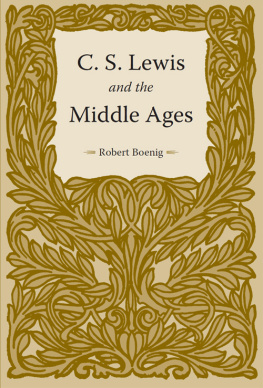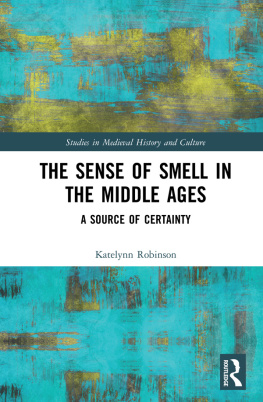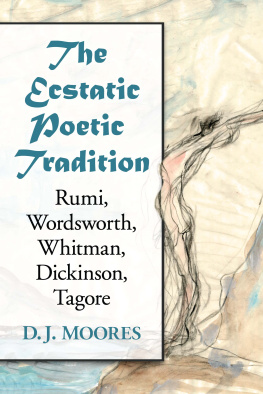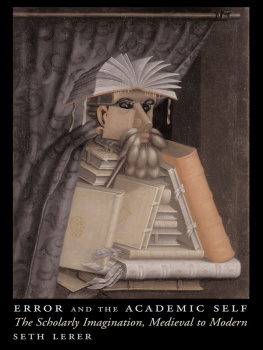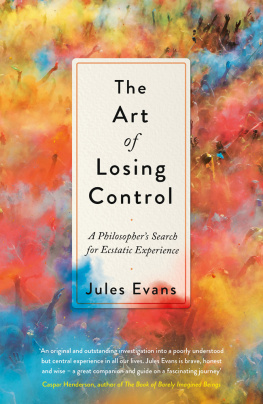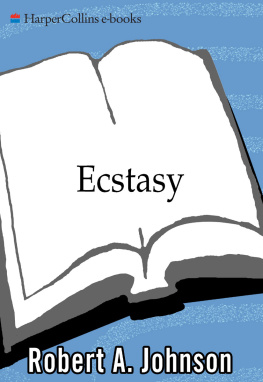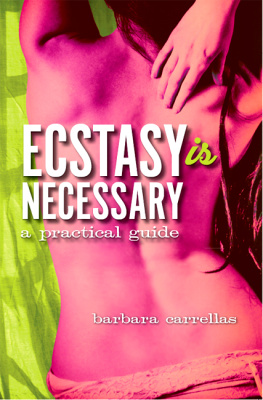ECSTASY IN THE CLASSROOM
FORDHAM SERIES IN MEDIEVAL STUDIES
Mary C. Erler and Franklin T. Harkins, series editors

Copyright 2019 Fordham University Press
All rights reserved. No part of this publication may be reproduced, stored in a retrieval system, or transmitted in any form or by any meanselectronic, mechanical, photocopy, recording, or any otherexcept for brief quotations in printed reviews, without the prior permission of the publisher.
Fordham University Press has no responsibility for the persistence or accuracy of URLs for external or third-party Internet websites referred to in this publication and does not guarantee that any content on such websites is, or will remain, accurate or appropriate.
Fordham University Press also publishes its books in a variety of electronic formats. Some content that appears in print may not be available in electronic books.
Visit us online at www.fordhampress.com.
Library of Congress Cataloging-in-Publication Data
Names: Even-Ezra, Ayelet, author.
Title: Ecstasy in the classroom : trance, self, and the academic profession in medieval Paris / Ayelet Even-Ezra.
Description: First edition. | New York, NY : Fordham University Press, 2019. | Series: Fordham series in medieval studies | Includes bibliographical references and index.
Identifiers: LCCN 2018024882| ISBN 9780823281923 (cloth : alk. paper) | ISBN 9780823281916 (pbk. : alk. paper)
Subjects: LCSH: EcstasyHistory of doctrinesMiddle Ages, 6001500. | Paul, the Apostle, Saint. | Visions in the Bible. | Altered states of consciousnessReligious aspects. | Experience (Religion)
Classification: LCC BV5091.E3 E94 2019 | DDC 248.2dc23
LC record available at https://lccn.loc.gov/2018024882
Printed in the United States of America
21 20 19 5 4 3 2 1
First edition
CONTENTS
As its title suggests, this book does three things: (1) It describes the discourse about Pauls trance and other modes of cognizing God through key questions raised by early thirteenth-century theologians; (2) It discusses the perceptions of the self implied by this discourse; (3) It suggests these questions resonate concerns of theologians regarding the nature of their academic profession. Each chapter, therefore, has accordingly three titles.
Not long after her falling down the rabbit hole, Lewis Carrolls Alice attempts to adjust to this wonderful altered state of consciousness. In order to understand who she is and whether she had become one of her friends, she tries to see what she knows, rather poorly, as it turns out:
I wonder if Ive been changed in the night? Let me think: was I the same when I got up this morning? But if Im not the same, the next question is, Who in the world am I? Ah, THAT s the great puzzle! Im sure I cant be Mabel, for I know all sorts of things, and she, oh! she knows such a very little! Besides, SHE s she, and Im I, andoh dear, how puzzling it all is! Ill try if I know all the things I used to know. Let me see: four times five is twelve oh dear! lets try Geography. London is the capital of Paris no, THAT s all wrong, Im certain! I must have been changed for Mabel!
What and how we know becomes part of us and defines, to a certain degree, who we are. Not only does knowledge make part of our individual identity, certain forms of knowledge have socially recognized agents whose public identity and social role center around this specific form of knowledge. Those experiencing ecstatic knowledge of the other world may become shamans or religious authorities; those mastering knowledge of a particular discipline may assume the role of university professors or scientific authorities.
While shamans and ecstatic forms of trance experiences have been in existence in almost every human culture for thousands of years, professors and study experiences in university classrooms are a comparatively recent phenomenon. This strange, peculiarly European institution took shape in the Western Europe of the twelfth and thirteenth centuries. For hundreds of years beforehand, learning in all forms and sources in Christian Europe had been intertwined with the religious life of the community. Monastic environments allowed for free slippage between critical study, observation, contemplation, and ecstasy. But the twelfth century saw dramatic changes of two particular types of knowledge of the divine: the ecstatic and the scholastic.
Together with proliferating interest in prophecies like those attributed to the legendary figure of Merlin, flesh-and-blood prophets began to appear on the stage of Western Europe. Individuals such as Hildegard of Bingen and Joachim of Fiore had repeated, powerful experiences that they put in writing with new force and expression, both verbal and visual, weaving them into their exegetical works in creative ways that far exceeded the established topos of soliciting Christ or the Holy Spirit for assistance in writing. Society, including fellow monks and abbots, churchmen, nobles, and kings regarded them as sources of knowledge and counsel. In the urban centers of the same period, masters and students in the increasingly popular schools of Paris, Bologna, and Oxford, which were to develop into the institutional form of the university, established themselves as another new type of agent of knowledge.
At the beginning of the thirteenth century, both tendencies proliferated energetically: visionaries of a new kind flourished, forming what is now called the new mysticism;
At the same time, however, even theology masters were subject to the general corporation of masters and its decisions. A layman could, at least theoretically, teach theology. During the first decades of the thirteenth century, progress of study became ever more structured, monitored, regulated, and ritualized by internal government. Written and unwritten customs and the establishment of ceremonies and degrees created an institutional sphere unto itself. Most of all, teaching was done with increasingly sophisticated instruments and methods of human ingenuity, structured around texts, dialectic, divisions, and definitions. Live prophecy or ecstatic experience had no place there.
The history of the dynamic relationship between rationalist and ecstatic approaches to the divine and between their human representatives in medieval society is a complex, intriguing one. This book tells one of its most fascinating chapters. But first, the following three short cases, in which masters and students engaged with others having altered states of consciousness or experienced such themselves, will give a taste of this borderline zone.
SCHOLARS AND ECSTATIC VISIONS IN THE REAL WORLD: THREE NON-EXEMPLARY CASES
Master Odo and the Sybille of the Rhine
Among Hildegard of Bingens correspondents was one, Odo of Soissons, a Parisian master. There is a danger in revealing secrets, he continues, alluding to the way King Hezekiah grievously offended God by opening up the storerooms of spices and the treasuries of the Temple to the Babylonian messengers. A few lines further down, he remarks that certain things which might distress the apostolic and ecclesiastical institution are kept under seal and not made known. Not very encouraging, considering Hezekiahs fate.
Only in the final sentences does Odo present his petition, asking her to resolve a certain problem for us: Many contend that God is not both paternity and divinity. Would she explain in a letter what she has perceived in the heavens about this matter? This is not an innocent question, and warning was indeed necessary. The problem posed by the Parisian master stood at the center of a dispute involving complex structures of knowledge, authority, and power that focused on Gilbert of Poitiers (d. 1154). Gilbert, a renowned Parisian master, argued that an abstraction like Fatherhood was distinct from that which the father was. Scholarly controversy turned serious as, according to Otto of Freising and John of Salisbury, local archdeacons in Poitiers, who were presumably masters themselves, resented their new bishop. Apparently, this conflict spiraled into a public dispute regarding this opinion in Paris in the 1140s and later in 1148, with Bernard of Clairvaux taking their side at a trial at the Council of Reims. The unknown date of the letter makes it hard to assess its relation to these events. Constant Mews estimates that in 1147 Odo was already opposing Gilbert. He probably learned about Hildegard in 1148, just after her claim of prophecy was approved in Trier with the endorsement of the same Bernard. Odo was therefore interested in her refuting Gilberts claims. Stover, on the other hand, argues that the letter, which does not refer to Gilbert, could have been written either before or after the trial, but not after the 1150s when Odo took the monastic habit. The warning tone, however, seems to me to support Mewss position.
Next page

